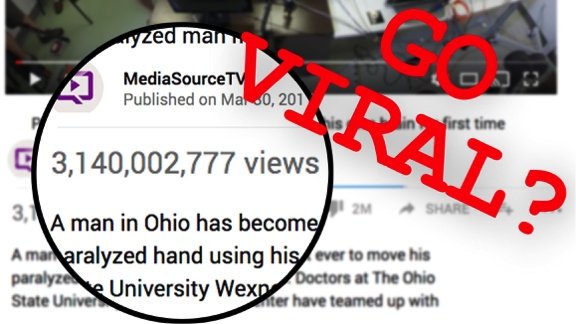Can You Make Content Go Viral?
In a competition for clicks and shares, how can marketers get their content widespread attention?
Lisa Arledge Powell, President, MediaSource
You’re a content creator wrapping up a planning session for your newest creative project with your client. Together, you’ve mapped out an approach you can all agree on and you’re packing up to leave. Just as you’re heading out the door, though, your boss calls out:
“Oh, and we want to make it go viral.”
How do you respond? And first of all, is this even possible?
 The question of virality is one that so many social strategists and content creators wrestle with every day. In this age of yodeling kids, Tide Pods and too many “challenges” to count, marketers want to know: can content be made to go viral, or does it just go viral?
The question of virality is one that so many social strategists and content creators wrestle with every day. In this age of yodeling kids, Tide Pods and too many “challenges” to count, marketers want to know: can content be made to go viral, or does it just go viral?
We asked Toby Bochan, Head of Video at Storyful, a company that specializes in analyzing social media intelligence from viral content to help increase shareability.
“I think there is no one formula to make something go viral. The things that go really super viral have an emotional connection to the viewer, which isn’t something you can necessarily create inauthentically,” said Bochan. “Marketers know that emotion is key. If you make content that makes a connection with your audience, then they will naturally want to share it.”
So what kind of content goes viral? Buzzfeed, who’s made a name for itself by publishing inherently viral content, analyzed the performance of many of their most shared articles and found two very important commonalities among all of the top viral posts.
- Strong, positive emotional response - Sharing happens most when viewers have a strong, positive reaction to content. According to a study by the New York Times, this content typically fell into one of four categories: awe-inspiring, emotional, positive or surprising. People engage not solely because they felt these reactions, but because they want to share the experience of being shocked, laughing out loud or uplifted with others.
- Reflective of self - People like to share things that say something about themselves. Identity statements send a message to others about the principles you uphold and the causes you align with. That edgy political meme your friend shared on Facebook is likely a reflection of their inner belief system and a reinforcement of their values.Unfortunately, there’s no “go viral” button that we can push as content marketers to ensure our content becomes a viral sensation. A lot has to go right to make you the next Yodeling Wal-Mart Kid. But while you can’t control the multitude of factors that must align to result in viral sharing, you can increase your odds.“Let's say you’re making a marketing video about student loans. Instead of talking about the loan itself, show the opening of the acceptance letter, the look on the student's face, the proud parents,” said Bochan. “That’s the moment. That's the emotion. You’ve created a shareable connection with the people you are trying to reach. That should be the focus. Emotions are more important than going viral.”Once you’ve ensured your content evokes a positive emotional response and leverages values many people see, or want to see, in themselves, it’s time to amplify your message. Target the influencers, brands or media most closely related to your content to help spread your message.At MediaSource, we use a relationship-based approach to help our content reach its target audience, seeking out the websites, social channels and influencers with audiences that match the content topic and style. We’ve taken our proven practices for media relations success and applied them to the viral sharing space.For our client, the Dave Thomas Foundation for Adoption, our team leveraged relationships with producers at the viral sharing platform Upworthy to increase exposure for this video we produced featuring the heartwarming story of Olivia’s road to finding her forever family. The content has garnered more than half a million views, about 3,000 reactions and nearly 300 shares.Just like when pitching traditional media, only pitch your content to these channels if it’s a good match. The right audience is more important than the biggest one.And psst… before you publish anything, make sure you’re up-to-date with the latest info about Facebook’s algorithm so your content doesn’t get buried on the timeline.
Lisa Arledge Powell is president of MediaSource, an award-winning creative agency that specializes in content-focused public relations, content marketing and national media exposure for major brands. Connect with Lisa on Twitter: @LisaArledge Find more articles by Lisa are available on PRSA’s Content Connection.
To learn more about Content Marketing, earn a certificate in content marketing from PRSA: https://bit.ly/

